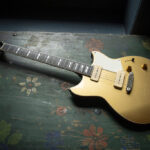The major 7th chord, often denoted as maj7, is a beautiful and sophisticated chord that adds a rich, jazzy flavor to your guitar playing. It’s a simple extension of the basic major chord, but it opens up a world of harmonic possibilities. If you’re looking to expand your chord vocabulary and add depth to your music, understanding and mastering the major 7th guitar chord is a must.
What Exactly is a Major 7th Chord?
At its core, a major 7th chord is a major triad with an added major 7th interval. Let’s break that down. A major triad is built from the 1st, 3rd, and 5th degrees of the major scale. For example, a C major triad consists of the notes C (root), E (major 3rd), and G (perfect 5th).
Now, to create a C major 7th chord (Cmaj7), we add the major 7th interval to this triad. In the key of C major, the 7th degree is B. Therefore, Cmaj7 is composed of the notes C, E, G, and B.
Listen to the difference in sound. A regular C major triad sounds bright and complete. However, when you add the major 7th (B), you get a more complex, lush, and slightly jazzy sound. The major 7th interval adds a distinctive color that’s both sophisticated and pleasing to the ear.
A helpful way to think about the major 7th interval is that it’s just a semitone (one fret on the guitar) below the root note. In the case of Cmaj7, B is one semitone below C. This makes it easy to find the major 7th note when constructing or recognizing these chords.
Often, when a major 7th is added, it replaces the higher octave of the root in a standard major chord voicing. This creates a smoother, more compact sound, as you can see in the example below. Notice how the root note at the octave is shifted down a fret to create the major 7th in the maj7 chord shape.
Exploring Major 7th Chord Shapes on Guitar
The good news is that you don’t need to learn completely new shapes to play major 7th chords. They are closely related to your familiar major chord shapes. The key is understanding where the major 7th note is added in relation to the standard major chord.
Below, we’ll explore common major chord shapes and their corresponding major 7th variations in both open and movable positions. Practice switching between the major and major 7th versions of each chord to train your ear to recognize the subtle but significant difference. Use the same root note for each pair (e.g., play D major and then Dmaj7) to clearly hear the effect of the added major 7th.
Open Position Major 7th Chord Shapes
In the diagrams below, the red dots (including open strings marked with “O”) indicate the root notes of each chord shape. These diagrams illustrate how to modify common open major chords into major 7th chords.

Open major triad chord shapes for guitar, showing common fingerings and root notes indicated in red.
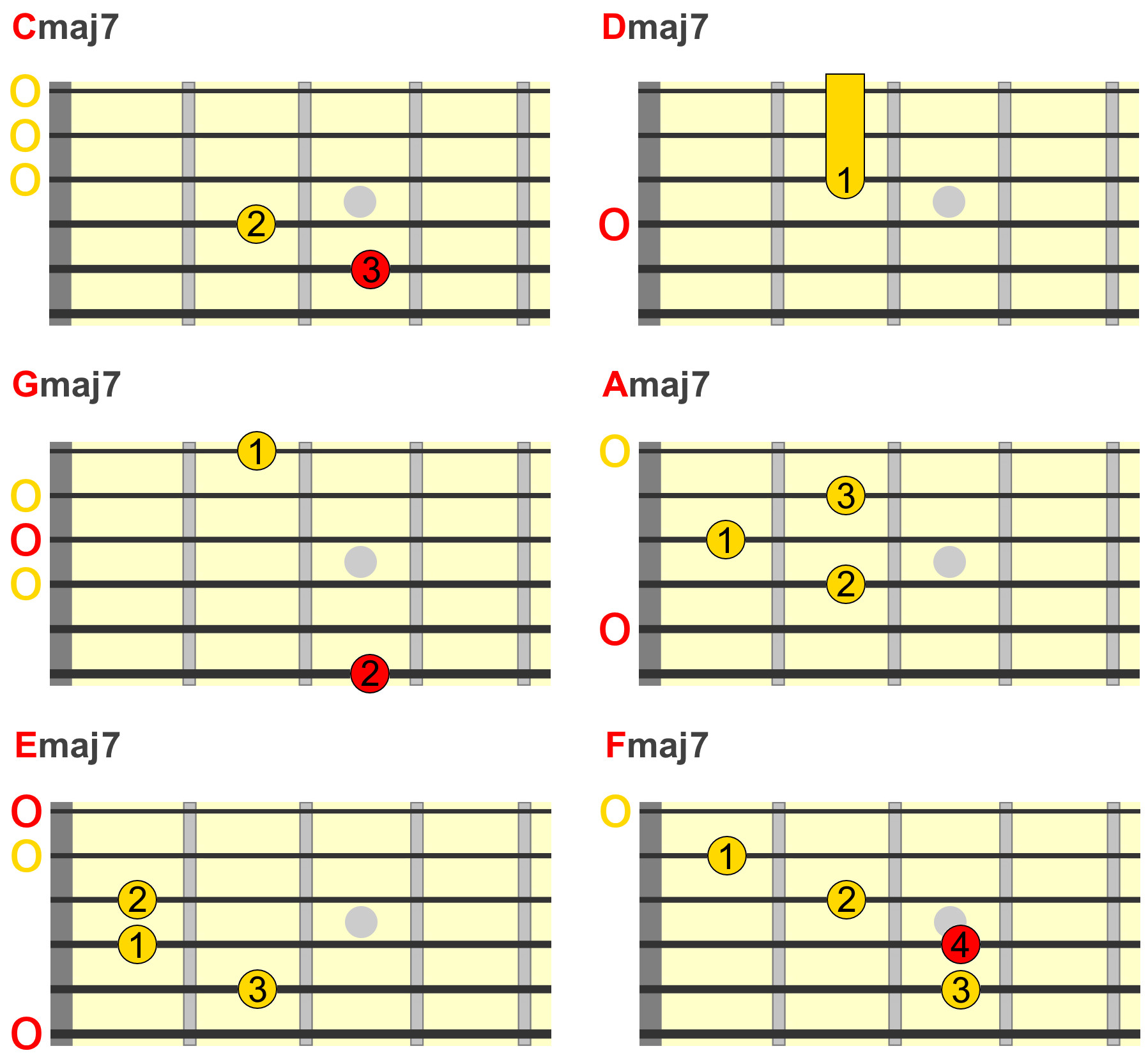
Open major 7th chord shapes on guitar, derived from open major triads by adding the major 7th interval, with root notes marked in red.
Movable Major 7th Chord Shapes
Movable chord shapes are incredibly useful because they allow you to play the same chord voicing in different keys up and down the guitar neck. For major 7th chords, the movable shapes are derived from movable major triad shapes. Simply position the root note (indicated in red in the diagrams) at the desired fret to play the major 7th chord in that key.
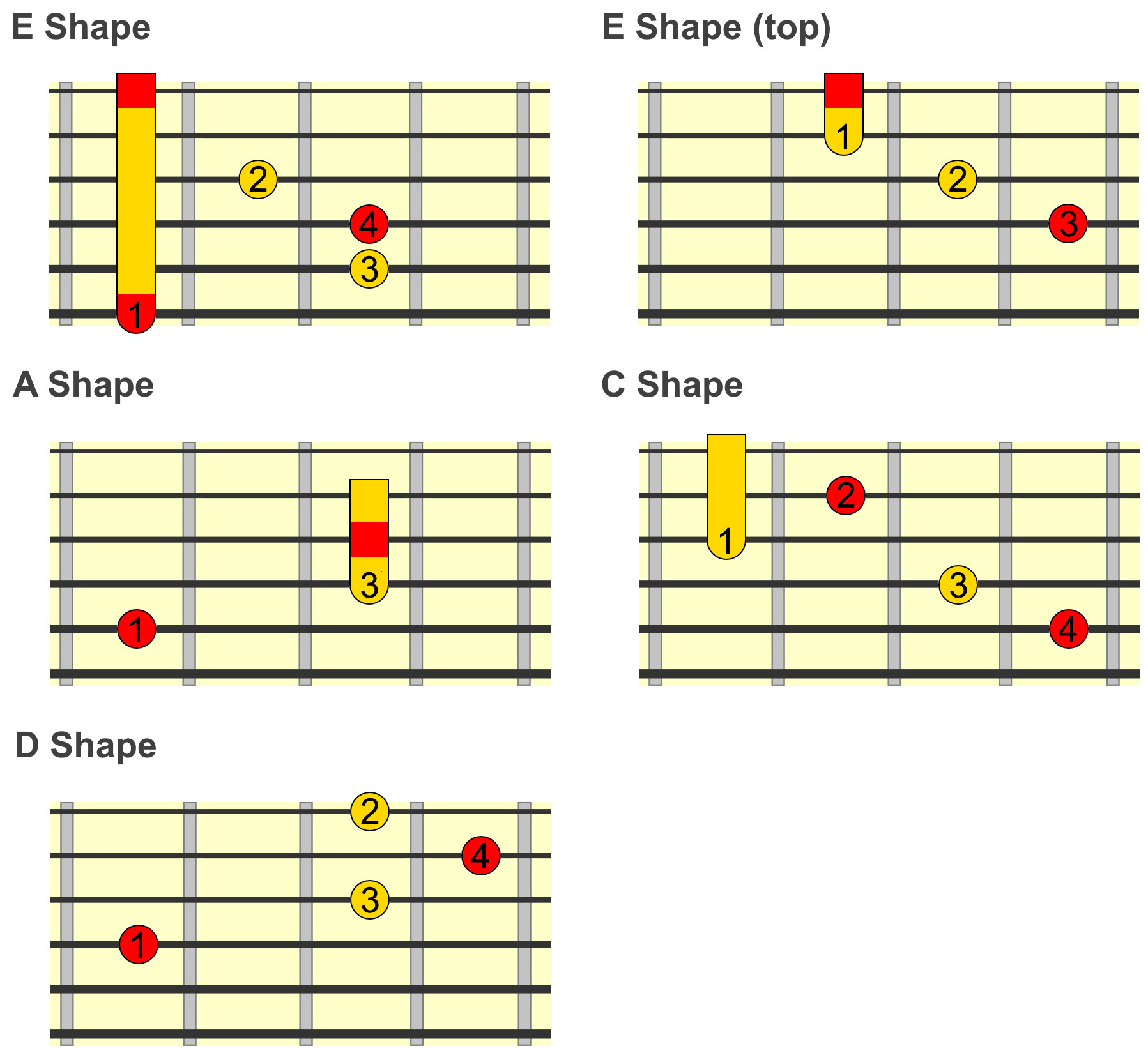
Movable major triad shapes for guitar, enabling playing major chords across different frets, with root positions highlighted in red.
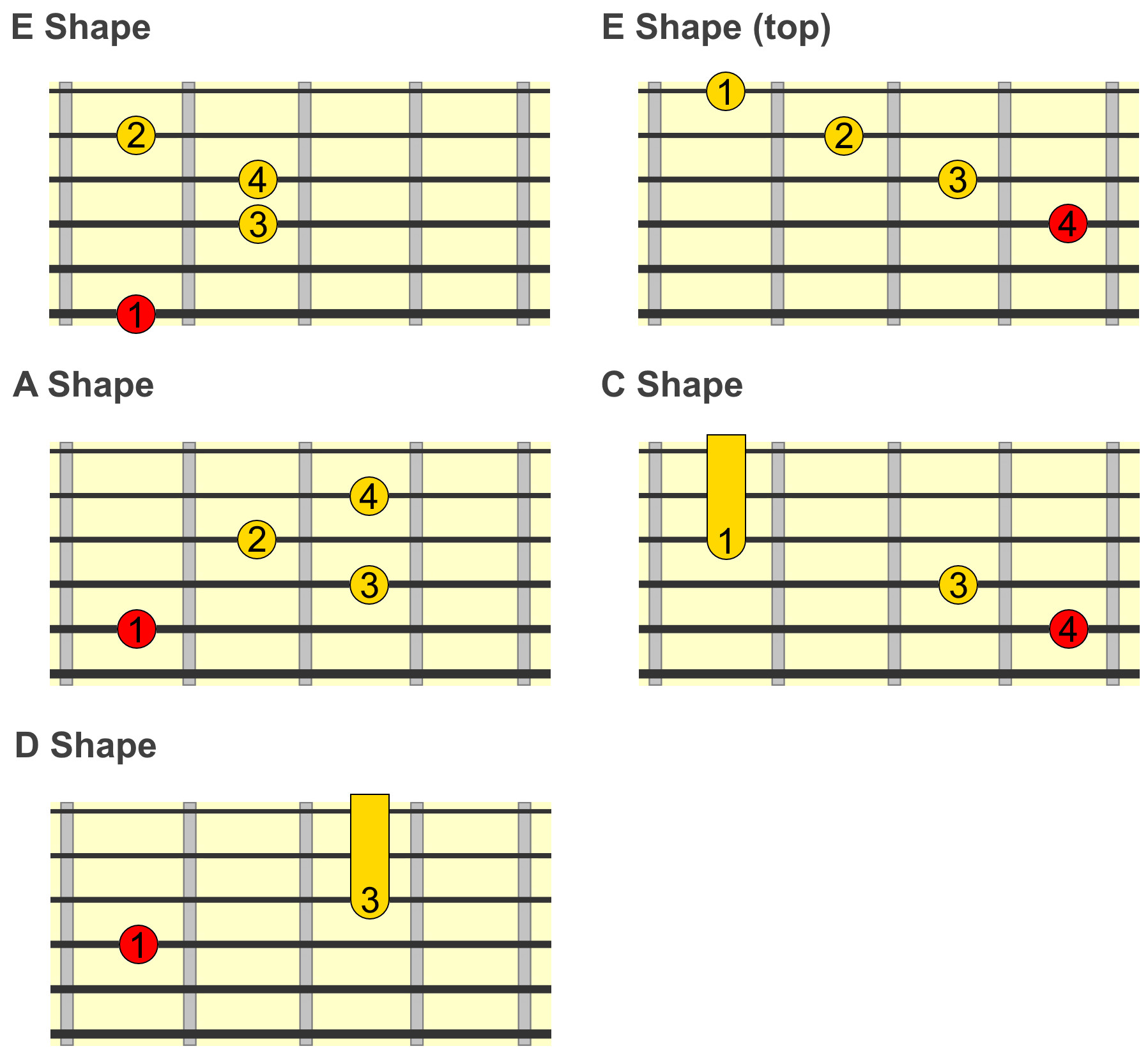
Movable major 7th chord shapes for guitar, allowing for major 7th chords in any key by positioning the root (red) on the desired fret.
Integrating Major 7th Chords into Progressions
Major 7th chords aren’t just isolated sounds; they play a vital role in chord progressions across various musical styles. They naturally occur in both major and minor key contexts, adding harmonic richness and color. While there are more adventurous ways to use maj7 chords, let’s start by understanding their most common and natural applications within key signatures.
The table below outlines where major 7th chords naturally fall within major and minor keys, based on harmonizing the major and minor scales. This shows you the scale degrees on which maj7 chords are typically built.

Chart illustrating the natural occurrence of major 7th chords in major and minor keys, showing their positions within harmonized scales.
Knowing this, you can confidently incorporate major 7th chords into your songwriting or when accompanying songs. Using maj7 chords on these specific scale degrees will add a layer of harmonic sophistication and depth to your progressions.
Major Key Tonic Chord (I)
In major keys, the tonic chord (the I chord, built on the root of the key) is very often a major 7th chord. For instance, in the key of D major, the D major chord is frequently played as a Dmaj7. This creates a more relaxed and refined tonic resolution.
You’ll also often hear the tonic chord oscillate between a basic major triad and a maj7 chord within a progression. This creates a subtle variation and harmonic interest without leaving the home key.
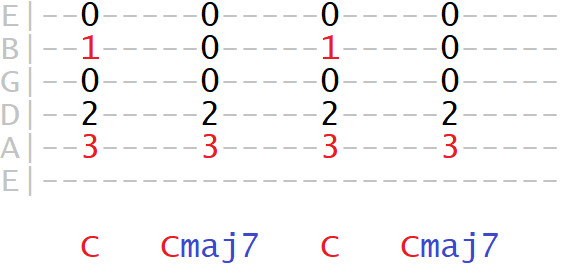
Example of a chord progression in C major using both C major and Cmaj7 chords, demonstrating the interplay between triad and major 7th.
Major Key Subdominant Chord (IV)
The IV chord, also known as the subdominant, in a major key also commonly takes the form of a major 7th chord. So, in the key of G major, the C chord (IV chord) would naturally be played as Cmaj7. This adds a smooth, jazzy feel to the subdominant harmony.
Minor Key III Chord
In minor keys, the III chord is typically a major chord and often voiced as a major 7th. For example, in A minor, the C major chord (III chord) is often played as Cmaj7. This creates a characteristic harmonic movement from the minor tonic to a major 7th chord.
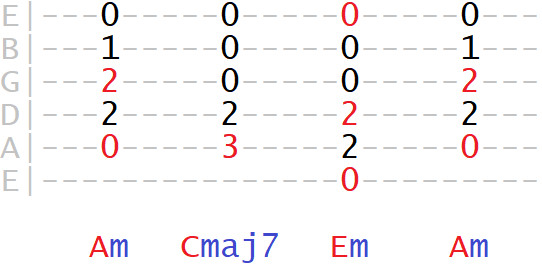
Chord progression example in A minor featuring Am, Cmaj7, and Em chords, showcasing the use of Cmaj7 as the III chord.
Minor Key VI Chord
Similarly, the VI chord in a minor key is also typically major and frequently played as a major 7th. In E minor, the C major chord (VI chord) is often voiced as Cmaj7. This provides another instance where the major 7th chord enriches the minor key harmony.
Chord progression in E minor using Em and Cmaj7, illustrating Cmaj7 as the VI chord in a minor context.
Trust Your Ear and Explore!
While these guidelines provide a solid foundation for using major 7th chords, remember that music is ultimately about what sounds good to you. Don’t be afraid to experiment and use major 7th chords wherever you feel they enhance your music. Your ear is your best guide!
In the next step, we’ll delve into more creative and perhaps unexpected ways to use major 7th chords in your progressions. We’ll also explore how to extend maj7 chords further, adding even more harmonic color and complexity to your guitar playing. Stay tuned!

